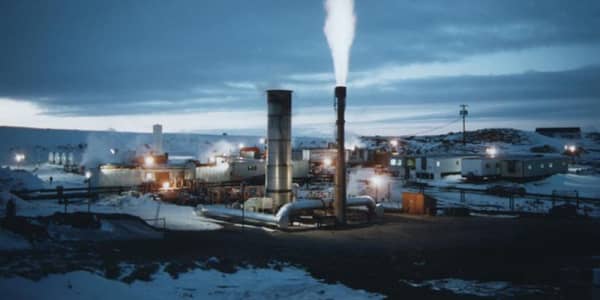Since CNBC launched in 1989, the U.S. has added a net 29.5 million jobs. Before the 2008 financial crisis, the number would have stood at 31.8 million. It was 20 million at the nadir of the Great Recession. It is a moving target. But that is part of the point, because the U.S. economy is creating and destroying jobs all the time. What matters is the pace of net job generation. That is where the drivers of America's economic dynamism—innovation, entrepreneurship, new-business formation, risk-taking and labor mobility—come together.
Even though U.S. job creation accelerated to a healthy 288,000 new jobs in April—and unemployment declined to its lowest level since Sept. 2008 at 6.3 percent—payroll job regeneration has been stubbornly slow, and what growth exists is polarized into high- and low-skill positions, leaving many American workers stranded in between.
Many of those who made CNBC's list of the 25 most transformative leaders, icons and rebels of the past quarter-century contributed significantly to net job generation. Jeff Bezos' Amazon, Larry Page and Sergey Brin's Google, and Mark Zuckerberg's Facebook are just three companies employing tens of thousands of people in jobs that didn't exist in 1989 because those companies didn't exist.
Such companies are known as gazelles—start-ups that grow fast and become significant job creators. They are the exception to the rule. In a seminal report in which he coined the usage, MIT economist David Birch estimated that gazelles account for 4 percent of all U.S. companies but 70 percent of new jobs. They are the wellspring of America's economic dynamism. Now there are signs that dynamism is being challenged, most recently by the Great Recession. Some economy watchers warn that, as a result, the U.S. is losing its economic mojo.
To see what is at risk, consider the company co-founded by No. 1 on our list, Steve Jobs. According to a study by researchers at Analysis Group, an economic and finance consulting firm, Apple had 50,250 workers in the U.S. in 2012, compared with fewer than 10,000 a decade earlier. That encompassed the period of explosive innovation that followed Jobs' return to Apple after his ouster.
Beyond the direct employment by Apple, a knock-on effect is enjoyed by the company's suppliers and the new businesses its products and services enable. Apple's success over that decade supported an additional 257,000 jobs at its vendors and, moving down the supply chain, their vendors, according to Analysis Group estimates. The researchers also figured that the spending power of those employees paid for another 187,000 jobs across the U.S. economy.
On top of that, Apple's App Store is estimated to have generated 291,250 jobs in the iOS app economy, everything from jobs for programmers to user interface designers, marketers and managers. In addition, apps developers received $9 billion in royalties—revenue that would have found its way into the greater economy as consumption. A study by Michael Mandel of the consulting firm South Mountain Economics for TechNet, an industry group of senior technology executives, found that by 2012, the broader app economy was responsible for 466,000 jobs in the U.S., versus zero in 2007, when the iPhone was introduced.
This job creation is not a one-way street. A typical U.S. multinational now has 40 percent of its employees outside the U.S., as well as many of its suppliers, some of whom perform work previously done in the U.S. Domestically, for every one of the 100,000-plus jobs that, say, Bezos has created since founding Amazon in 1994, there have been job losses at booksellers and in other industries disrupted by e-commerce.
That creative and destructive cycle lets the U.S. economy efficiently reallocate its labor resources from sector to sector, firm to firm and job to job. The individual employee doesn't always go along, though, and the discomfort had been particularly acute since the Great Recession triggered by the 2008 global financial crisis.
The fear of economy-watchers is that slower job regeneration is not just cyclical. They point to three pieces of evidence: lower job churn, slower productivity and less new-business formation. All three significantly lag their historical norms. The situation led Atlanta Fed President Dennis Lockhart late last year to warn that America could be losing its "economic mojo."
The Great Recession appears to have solidified trends that took hold in the early 2000s. During the 1990s, 16 percent of total private-sector employment per quarter was typically accounted for by job churn—expanding companies' hiring new workers and shrinking ones' handing out pink slips. Since the turn of the century, the rates of new hirings and of separations have slowed. The quarterly churn rate was closer to 12 percent in 2012, the latest data available. In raw numbers, some 14 million jobs are churned per quarter; it would have been 18 million at 1990s rates. The U.S. economy is not reallocating labor resources to the places where they will be most productive as quickly as it did.
Job reallocation is "one of the primary ways an economy expands," Mark Curtis, a visiting scholar at the Atlanta Fed says. The link with economic and wage growth is particularly important for younger workers. With a few exceptions, Curtis sees the decline in job reallocation across all states and industries. And he is not alone in find that troubling, though no economist has conclusively identified the cause of this decline.
The second piece of evidence for America's losing its jobs mojo, slower productivity growth, may be temporary, and reverse with the return of normal economic growth or another burst of technological innovation. The third piece, slower new-business formation, is more concerning. It took a big hit during the Great Recession and has not regained its vigor, as it did after previous recessions. Further, the businesses that are starting up are creating fewer jobs on average than history suggests they should. That is even true in high tech and IT, where young firms had been above-average job generators.
As Birch noted, most new businesses stay small. Only a fraction become gazelles. America's economic dynamism requires a continual flow of new ones each year. The smaller the pool of new companies, the fewer gazelles—the Apples, Amazons, Googles and Facebooks of tomorrow—are likely to emerge.






